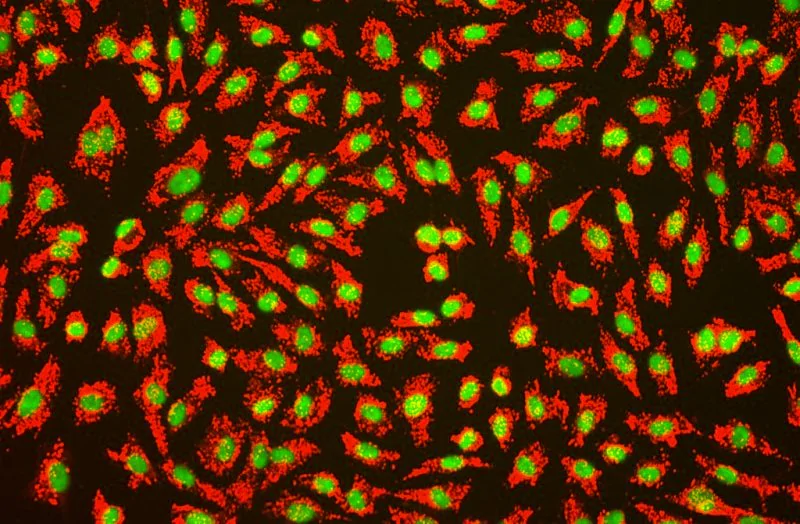Human Umbilical Vein Endothelial Cells
Product Code:
SC-8000
SC-8000
Host Type:
Human
Human
Regulatory Status:
RUO
RUO
No additional charges, what you see is what you pay! *
| Code | Size | Price |
|---|
| SC-8000 | 5 x 10^5 cells/vial | £313.00 |
Quantity:
Prices exclude any Taxes / VAT
Stay in control of your spending. These prices have no additional charges, not even shipping!
* Rare exceptions are clearly labelled (only 0.14% of items!).
* Rare exceptions are clearly labelled (only 0.14% of items!).
Multibuy discounts available! Contact us to find what you can save.
This product comes from: United States.
Typical lead time: 10-14 working days.
Contact us for more accurate information.
Typical lead time: 10-14 working days.
Contact us for more accurate information.
- Further Information
- Documents
- References
- Related Products
- Show All
Further Information
Extra Description:
HUVEC are Isolated from human umbilical veins. cryopreserved at passage one and delivered frozen. Each vial contains >5 x 10^5 cells in 1 ml volume.
Long Description:
Vascular endothelial cells contribute to the maintenance of vascular homeostasis. Vascular endothelial cells produce and secrete activators and inhibitors of the coagulation and fibrinolysis system. In addition, they mediate the adhesion and aggregation of blood platelets. Endothelial cells also release molecules that regulate cell proliferation and control vessel wall tone. Human umbilical vein endothelial cells (HUVEC) are the most commonly used cell type for the study of endothelial cell processes in vitro. HUVEC have a “cobblestone” morphology, show positive staining for vWF/Factor VIII and CD-31, and the ability to take up acetylated low-density lipoprotein. Cells pretreated with IL-1 or TNF-alpha also selectively express E-selectin and VCAM.
HUVEC from ScienCell Research Laboratories are isolated from human umbilical veins. HUVEC are cryopreserved at passage one and delivered frozen. Each vial contains >5 x 10^5 cells in 1 ml volume. HUVEC are characterized by immunofluorescence with antibodies specific to vWF/Factor VIII and/or CD31 (PECAM1). HUVEC are negative for HIV-1, HBV, HCV, mycoplasma, bacteria, yeast and fungi. HUVEC are guaranteed to further expand for 15 population doublings under the conditions provided by ScienCell Research Laboratories.
Recommended Medium -
It is recommended to use endothelial cell medium (ECM, Cat. #1001) for the culturing of HUVEC in vitro .
Documents
References
- https://www.ncbi.nlm.nih.gov/pmc/articles/PMC2670889/
- https://pubmed.ncbi.nlm.nih.gov/17292350/
- https://pubmed.ncbi.nlm.nih.gov/21105578/
- https://pubmed.ncbi.nlm.nih.gov/15051379/
- https://www.researchgate.net/publication/23472155_Coxsackie-_and_adenovirus_receptor_CAR_is_expressed_in_lymphatic_vessels_in_human_skin_and_affects_lymphatic_endothelial_cell_function_in_vitro
- https://pubmed.ncbi.nlm.nih.gov/19638466/
- https://pubmed.ncbi.nlm.nih.gov/18166221/
- https://pubmed.ncbi.nlm.nih.gov/21110950/
- https://pubmed.ncbi.nlm.nih.gov/23848964/
- https://pubmed.ncbi.nlm.nih.gov/23733368/
- http://downloads.hindawi.com/journals/sci/2015/350718.pdf
- http://www.ncbi.nlm.nih.gov/pmc/articles/PMC4334476/pdf/ten.tea.2014.0154.pdf
- https://www.spandidos-publications.com/ijmm/37/3/631
- http://www.ncbi.nlm.nih.gov/pmc/articles/PMC3351911/pdf/cr2011139a.pdf
- https://pubmed.ncbi.nlm.nih.gov/26346982/
- https://www.ncbi.nlm.nih.gov/pmc/articles/PMC4516997/
- http://www.ncbi.nlm.nih.gov/pmc/articles/PMC4594676/pdf/jcmm0019-2341.pdf
- https://pubmed.ncbi.nlm.nih.gov/25883978/
- http://www.ncbi.nlm.nih.gov/pmc/articles/PMC4745742/
- https://www.ahajournals.org/doi/10.1161/JAHA.115.003042
- https://journals.plos.org/plosone/article?id=10.1371/journal.pone.0127931
- https://www.spandidos-publications.com/mmr/12/2/2481/
- https://onlinelibrary.wiley.com/doi/full/10.1155/2015/957574
- http://journals.plos.org/plosone/article?id=10.1371/journal.pone.0146468
- https://www.ncbi.nlm.nih.gov/pmc/articles/PMC4356259/
- and more!



